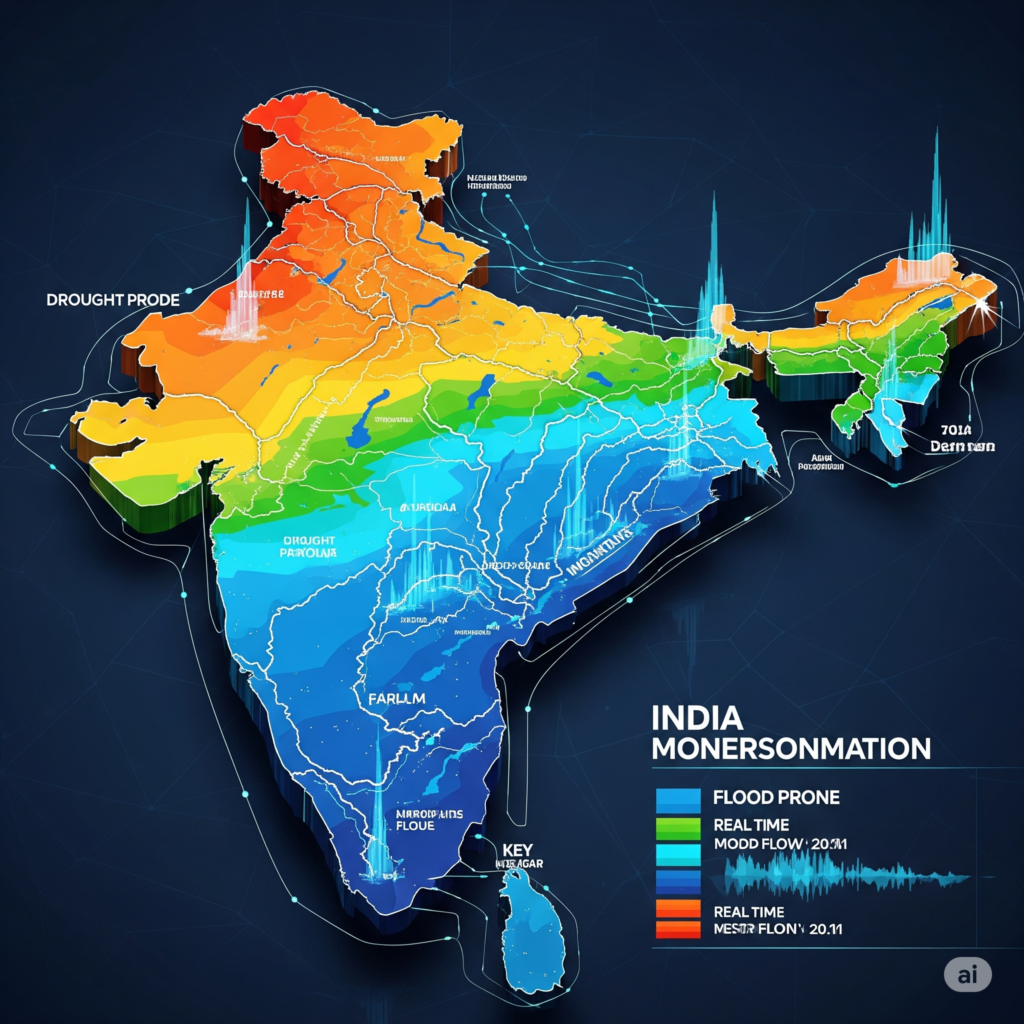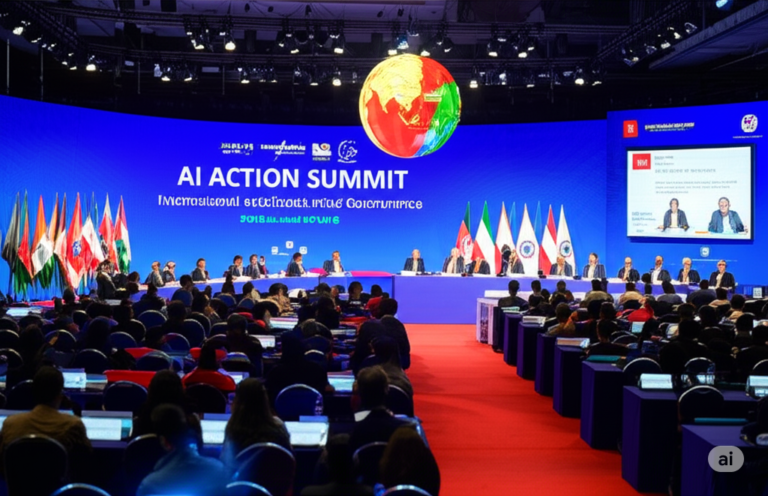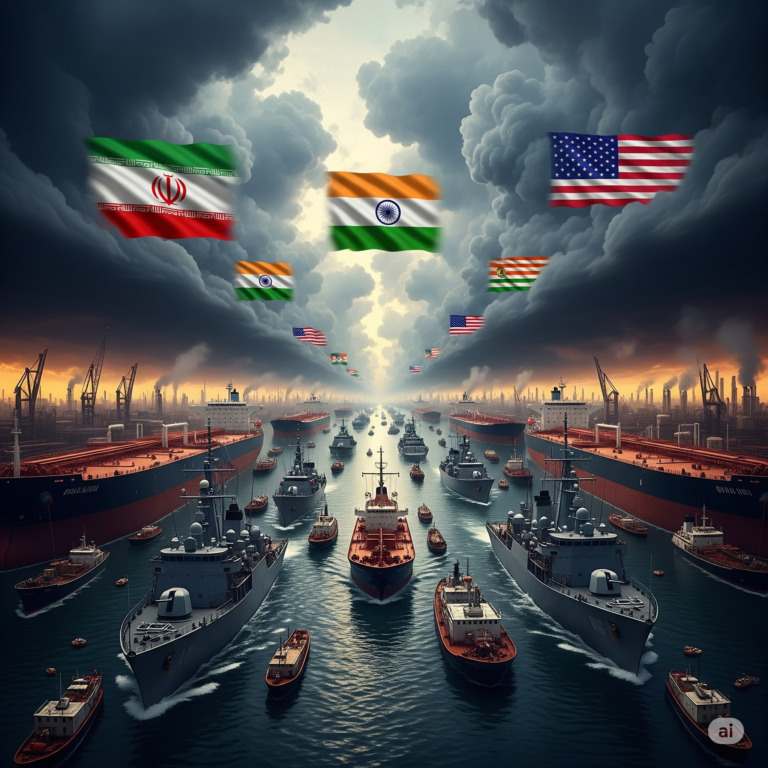Every year, the Indian monsoon arrives like clockwork, bringing with it not just rains, but hope, sustenance, and life. Spanning from June to September, the southwest monsoon contributes around 75% of India’s annual rainfall, replenishing rivers, supporting agriculture, and regulating the country’s water supply. But in recent decades, the monsoon has become erratic and extreme. As climate change accelerates, India is witnessing both devastating floods and crippling droughts in the same season. These unpredictable patterns not only threaten food security but also challenge the nation’s economic resilience, urban planning, and disaster preparedness.
This blog takes a deep dive into India’s monsoon challenges amid climate change, exploring the science, the social impact, and the urgent need for policy reform and technological intervention.
I. Understanding the Indian Monsoon: A Brief Overview
1.1 What Is the Indian Monsoon?
The Indian monsoon is a complex atmospheric phenomenon driven by temperature differences between land and ocean. It comprises two main phases:
- Southwest Monsoon (June–September): The primary rainy season, originating from the Indian Ocean.
- Northeast Monsoon (October–December): Affecting mainly southern India.
These seasonal winds carry moisture-laden clouds over the subcontinent, playing a vital role in India’s ecology and economy.
1.2 Monsoon’s Role in Indian Agriculture and Economy
- Nearly 60% of Indian agriculture is rain-fed.
- Monsoon rains impact GDP, inflation, crop yields, and rural employment.
- Even sectors like energy (hydropower), drinking water supply, and infrastructure are directly affected by rainfall patterns.
II. Climate Change and the Changing Monsoon
2.1 Shifting Patterns and Uneven Distribution
- Rainfall is becoming increasingly erratic, with short bursts of extreme rainfall followed by long dry spells.
- Some regions receive excess rainfall leading to floods, while others face deficits resulting in droughts.
- For example, in 2023, Himachal Pradesh faced landslides from torrential rain, while parts of Karnataka saw water scarcity.
2.2 Delayed and Early Onsets
- The traditional predictability of the monsoon’s arrival and withdrawal has weakened.
- Early or delayed monsoons disrupt sowing cycles, particularly affecting farmers with limited irrigation access.
2.3 Rising Temperatures and the Monsoon Cycle
- Global warming is altering atmospheric pressure systems that govern the monsoon.
- The Indian Ocean Dipole (IOD) and El Niño-Southern Oscillation (ENSO) events have become more frequent and intense, influencing monsoon variability.
III. Socio-Economic Impact of a Disrupted Monsoon
3.1 Agricultural Distress and Farmer Suicides
- Crop failure due to poor rains pushes marginal farmers into debt.
- In regions like Maharashtra and Andhra Pradesh, erratic rains have been linked to spikes in farmer suicides.
3.2 Water Scarcity in Urban and Rural Areas
- Cities like Bangalore and Chennai have faced severe water shortages despite experiencing floods during the same year.
- In rural India, drying wells and ponds push communities toward unsafe water sources.
3.3 Migration and Rural Unrest
- Failed monsoons cause seasonal migration from villages to cities, leading to overcrowding and slum expansion.
- Displaced populations also increase pressure on urban infrastructure.
IV. Floods, Landslides, and Urban Chaos
4.1 Urban Flooding: A Man-Made Crisis?
- Over-concretization, poor drainage, and encroachment on wetlands have made Indian cities highly vulnerable.
- Cities like Mumbai, Delhi, and Guwahati experience annual flooding despite advanced warning systems.
4.2 Mountain States at Risk
- Climate-induced heavy rains in Himalayan states are causing more landslides, flash floods, and glacial lake outburst floods (GLOFs).
V. Technology and Forecasting: What Are We Doing Right?

5.1 Advances in Weather Forecasting
- The India Meteorological Department (IMD) now uses AI and satellite data for better accuracy.
- The Bharat Forecasting System (BFS) promises hyperlocal, high-resolution predictions.
5.2 Early Warning Systems and Disaster Management
- Mobile-based alert systems (e.g., Damini app for lightning), flood forecasting models, and community radio have improved reach.
- Yet, delays in response and poor infrastructure remain key bottlenecks.
VI. Policy and Adaptation: The Way Forward
6.1 Strengthening Climate Resilience in Agriculture
- Promote climate-resilient crops, crop insurance schemes, and water harvesting.
- Enhance awareness of agro-meteorological services at the grassroots level.
6.2 Urban Planning for a Changing Climate
- Cities need to invest in green infrastructure, rainwater harvesting, and sponge city models.
- Protecting urban lakes and wetlands must become a top priority.
6.3 National Missions and International Commitments
- India’s National Action Plan on Climate Change (NAPCC) includes eight missions, including the National Water Mission and Sustainable Agriculture Mission.
- India’s Updated NDCs under the Paris Agreement commit to reducing emissions and increasing renewable energy.
VII. Local Success Stories and Grassroots Innovations
7.1 Rajasthan’s Revival of Traditional Water Tanks
- Villages in Rajasthan have restored ancient johads and baolis to capture rainwater effectively.
7.2 Kerala’s Community Weather Monitoring
- Local schools and communities in Kerala participate in rainfall data logging, helping in micro-level predictions.
7.3 Assam’s Flood-Resilient Architecture
- Raised houses and floating schools show how traditional knowledge blends with modern resilience.
VIII. The Road Ahead: Science, Society, and Sustainability
India’s monsoon is no longer just a seasonal weather event—it is a barometer of how the country adapts to the climate crisis. The government, scientists, urban planners, and citizens must work together to protect this lifeline. The solutions exist, but they need to be scaled with urgency and inclusivity.
Climate change is not waiting. Neither can we.
Conclusion: A Call to Action
India stands at a crossroads where its monsoon could either continue to support the subcontinent or become a source of repeated disaster. This moment demands collective action, scientific innovation, and policy resolve to ensure that the monsoon remains a blessing rather than a curse.
Hyperlocal forecasting, climate-smart agriculture, green cities, and empowered communities must be the pillars of India’s monsoon strategy in the era of climate change.
Let’s weather the storm—together.









+ There are no comments
Add yours